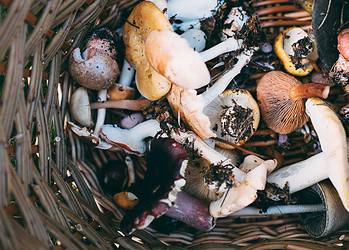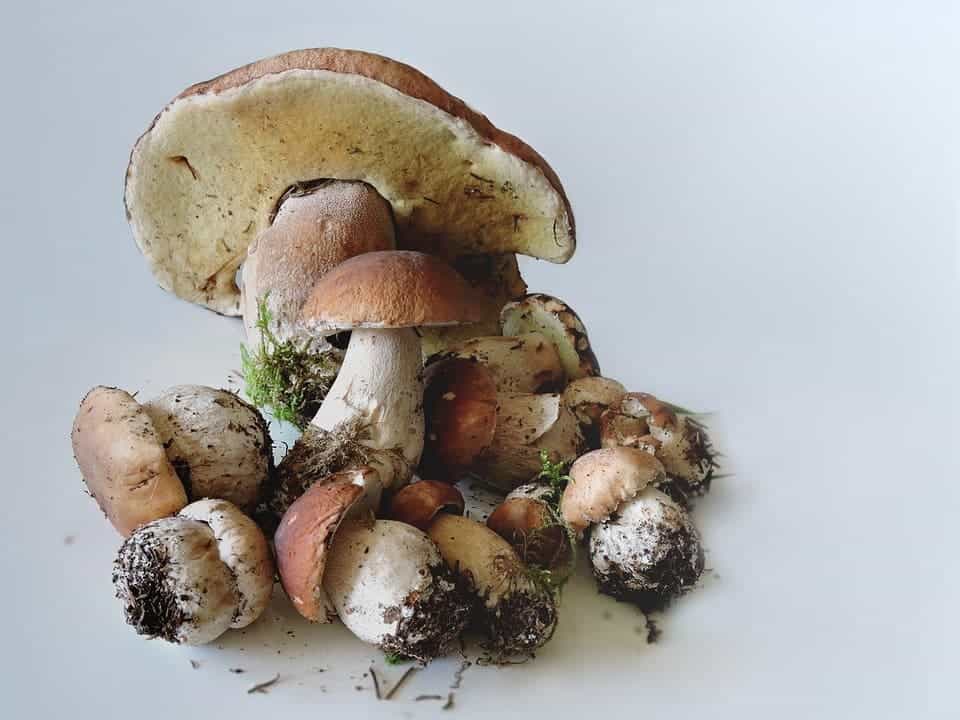The fall season is for trick or treating but if that is not your cup of tea, some people ought to go mushroom hunting. With a number of mushroom species popping out there, this will surely be thrilling!
However, put in mind that not all mushrooms are created equal. Some may be a culinary delight while others are a nightmare. Welcome to the world of poisonous mushrooms.
Mushroom poisoning is a common issue to look out for as foragers in most cases misidentify a poisonous species as edible. Cases of mushroom indigestion date back to prehistoric times and they played a surprisingly important role in history, accounting for the tragic death of Roman Emperor Claudius.
Today, most mushrooms are farmed. But there seems to be a growing interest in mushroom foraging and mushroom hunting is on the rise here we jot down important reminders before going into the quest.
These toxins aren’t just dangerous to humans, but can also pose a threat to animals, like your pets, who might accidentally ingest them. So, why take the risk? It’s essential to understand the different types of poisonous mushrooms and how to identify them.
Why some mushrooms are poisonous
To understand why and how mushrooms can be poisonous, we must first look at their biology.
Mushrooms just sprout in your garden or in the woods. They may seem to grow like a plant but genetically, mushroom bodies are closer to those of animals. However, mushrooms are neither plants nor animals.
Mushrooms are the fruiting bodies of fungi, organisms that play a vital role in breaking down dead organic matter and recycling nutrients. Fungi produce spores, which are microscopic reproductive units, to propagate their species. Mushrooms are not capable of converting sunlight to energy much like plants but uniquely they are able to acquire energy from decaying organic matter. This is why they are commonly found in rotting roots, manure, and stumps.
Some fungi have evolved to produce toxic compounds, known as mycotoxins, to deter consumption by animals or to defend against competing organisms. When you consume a poisonous mushroom, these mycotoxins can cause a range of symptoms – from mild discomfort to organ failure and even death.
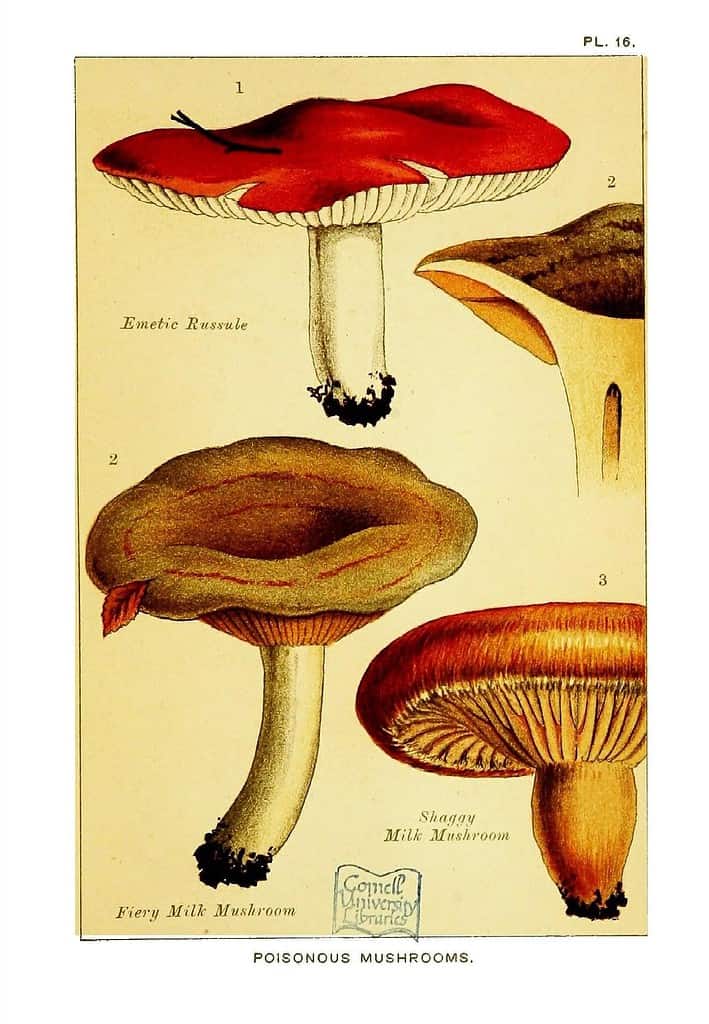
Types of poisonous mushrooms
There are 14,000 different species of mushrooms in the world and classifying them requires expertise and knowledge. One should not just eat a mushroom unless you can positively identify it – never-ever.
There is a wide variety of poisonous mushrooms, each with its unique set of toxins and symptoms. We can’t possibly go through all of them here, so we’ll discuss some of the most common types.
Amanitas
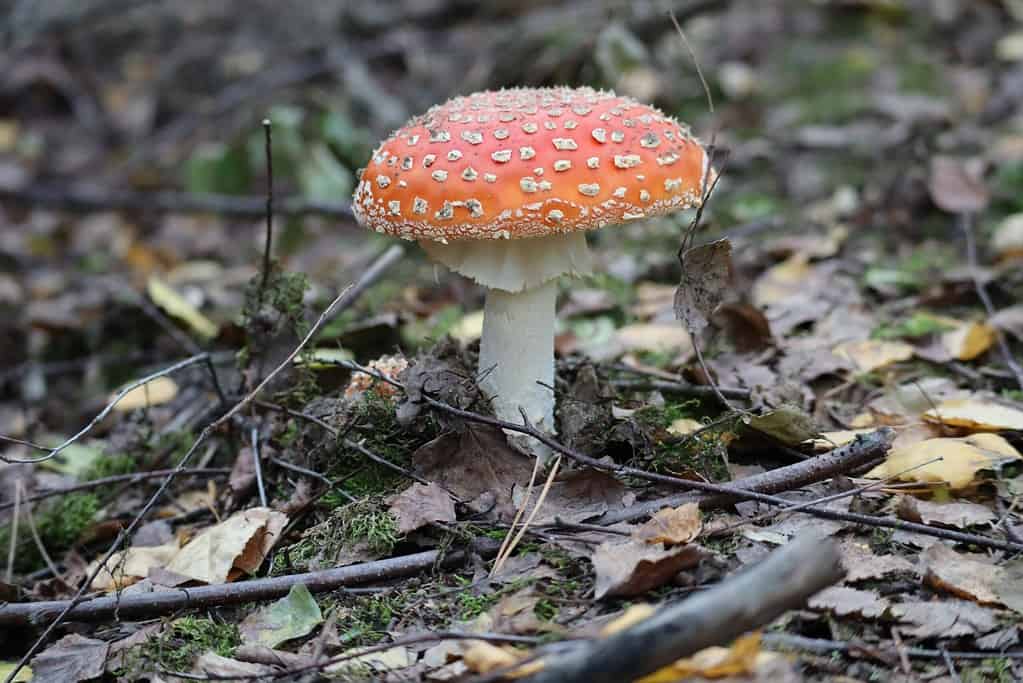
Amanita is a genus of mushrooms that includes some of the most dangerous and toxic species. Among them, the Amanita phalloides, also known as the “death cap,” is responsible for the majority of fatal mushroom poisonings worldwide.
This type of Amanita contains a harmful substance that causes liver damage. Benign symptoms of mushroom poisoning include upset stomach, vomiting, weakness, and bloody diarrhea. In certain species, these would manifest after an hour or a day of ingesting. Hence, it is important to be cautious.
Additionally, “magic mushrooms” in the Amanita group, such as Amanita muscaria, are also unsafe for consumption. They can make people have vivid hallucinations and in large doses, it can be seriously lethal. Amanita muscaria, or the “fly agaric,” is easy to recognize due to its bright red cap with white spots. While not as deadly as the death cap, the fly agaric can still cause hallucinations, vomiting, and seizures.
Little Brown Mushrooms (LBMs)
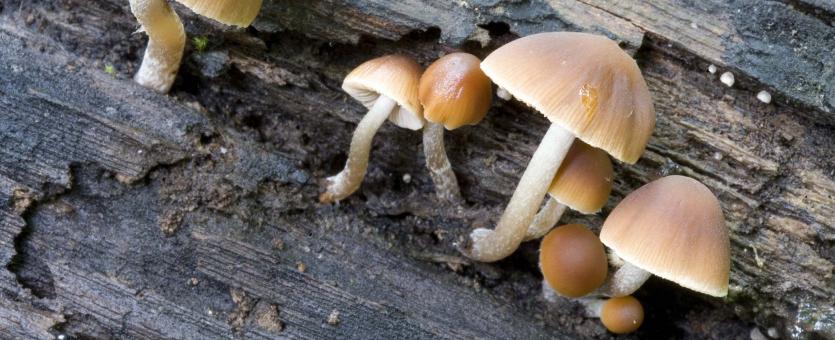
Many poisonous mushrooms fall under the umbrella term of “Little Brown Mushrooms” or LBMs. These small, brown mushrooms are difficult to identify and can be easily confused with edible species. This is what makes them particularly dangerous: they look very similar to edible mushrooms. That’s also why it’s so important to avoid any mushroom you’re not 100% certain of. Am I repeating myself with this? Absolutely. Because it’s so important.
One of the most toxic LBMs is the Galerina marginata, also known as the “funeral bell.” It contains the same deadly amatoxins found in the death cap. Symptoms include severe abdominal pain, vomiting, and diarrhea, which may progress to liver and kidney failure.
False Morels
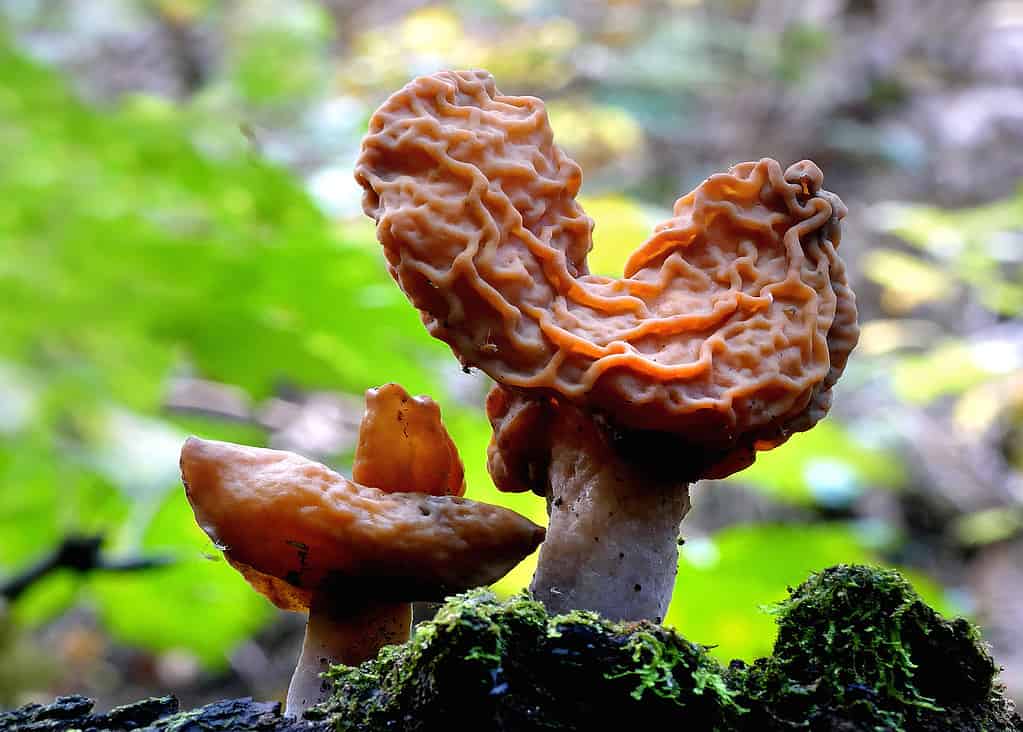
False morels (Gyromitra spp.) resemble the highly sought-after and edible true morels (Morchella spp.) but contain the toxic compound gyromitrin. When consumed, gyromitrin can cause symptoms such as vomiting, diarrhea, dizziness, and seizures. In severe cases, it may lead to kidney and liver failure or even death.
You can compare the cap to distinguish it from true morels, but this can be very challenging.
Morels (sort of)
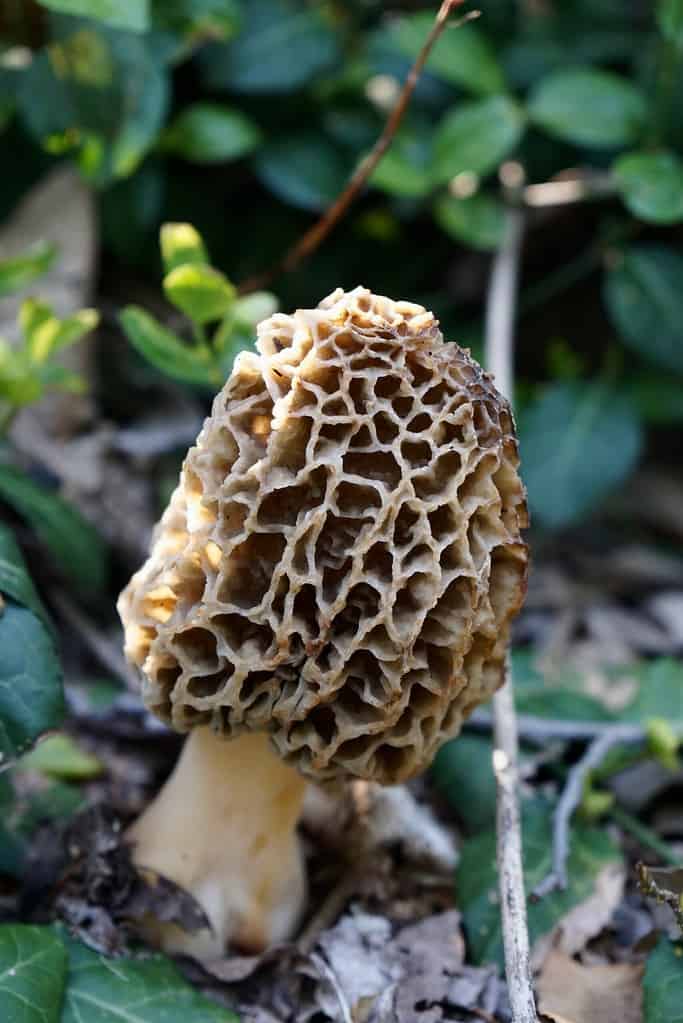
Speaking of morels… In the spring, one mushroom type, Morchella species or morels, draw out many foragers. These mushrooms are cherished for their distinctive taste and high nutritional value. It is usually found growing under certain tree species such as tulip poplars, hickory, and elm.
Morels are toxic when eaten raw. That’s why you have to cook them carefully.
Cortinarius Species
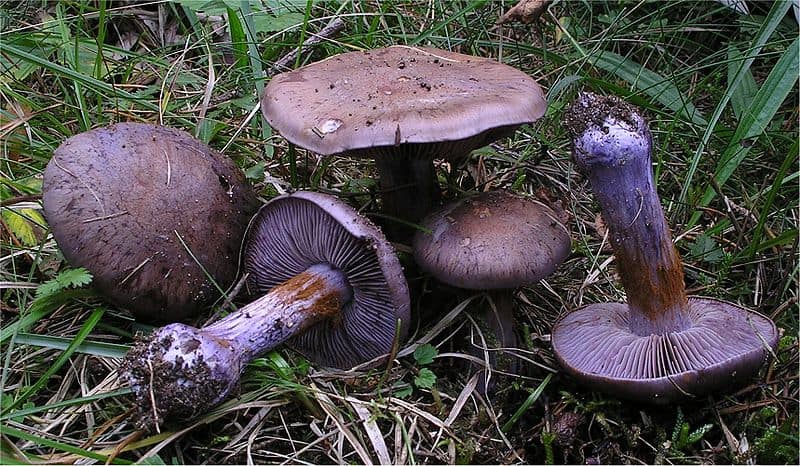
Cortinarius is a large genus of mushrooms that contains several toxic species. One such species is Cortinarius orellanus, known as the “deadly webcap.” It contains the toxic compound orellanine, which can be life-threatening. Symptoms may take several days to appear, making diagnosis and treatment more challenging.
There are thousands of species of Cortinarius but all have a rusty brown spore print. Even though some mushrooms from this genus can be consumed, because they look so similar to one another, experts strongly advice people to never eat any Cortinarius species.
Inocybe Species

The Inocybe genus is another large genus, with over 1,400 species. It includes several toxic species, many of which contain the deadly compound muscarine. Muscarine can cause excessive salivation, sweating, vomiting, diarrhea, and difficulty breathing.
Yet again, there are some edible species in the genus, but it’s extremely difficult to distinguish them from poisonous mushrooms. In fact, some identifications can only be done with a microscope. Best to stay away from this one.
Lepiota Species
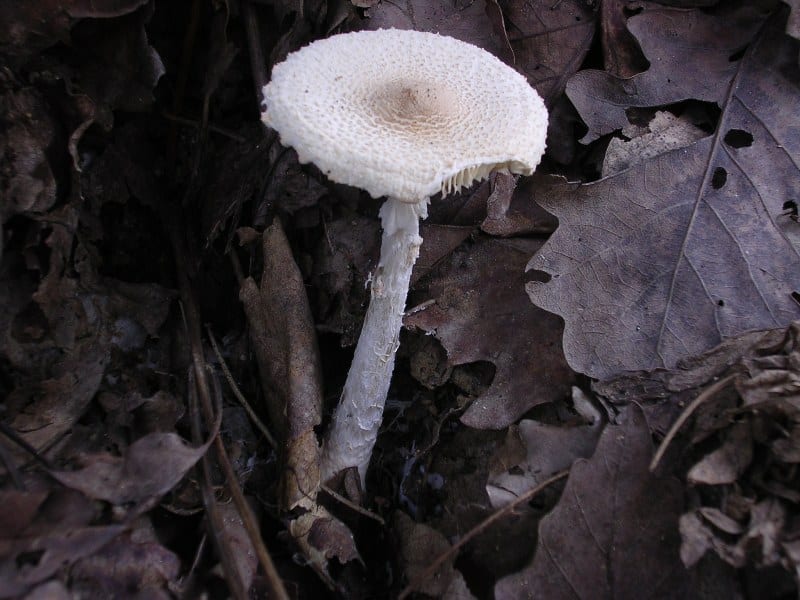
While some Lepiota mushrooms are edible, others can be highly toxic. The Lepiota brunneoincarnata (deadly dapperling) and Lepiota helveola (lemon-yellow lepiota) both contain the deadly amatoxins found in death caps. Symptoms include severe abdominal pain, vomiting, and diarrhea, which may progress to liver and kidney failure.
Clitocybe Species
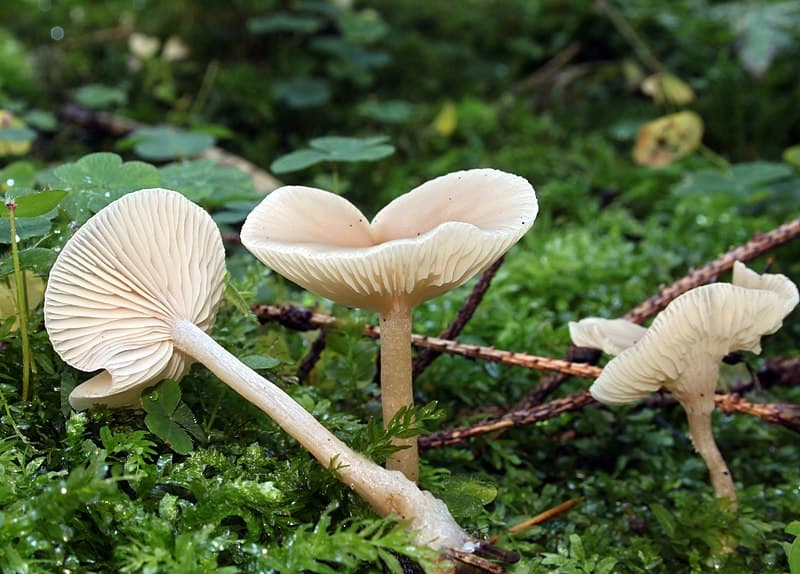
Clitocybe mushrooms are another group to approach with caution, as they contain toxic species. The Clitocybe dealbata (ivory funnel) and Clitocybe rivulosa (fool’s funnel) both contain the dangerous muscarine toxin. Symptoms of muscarine poisoning include excessive salivation, sweating, vomiting, diarrhea, and difficulty breathing.
Paxillus Species
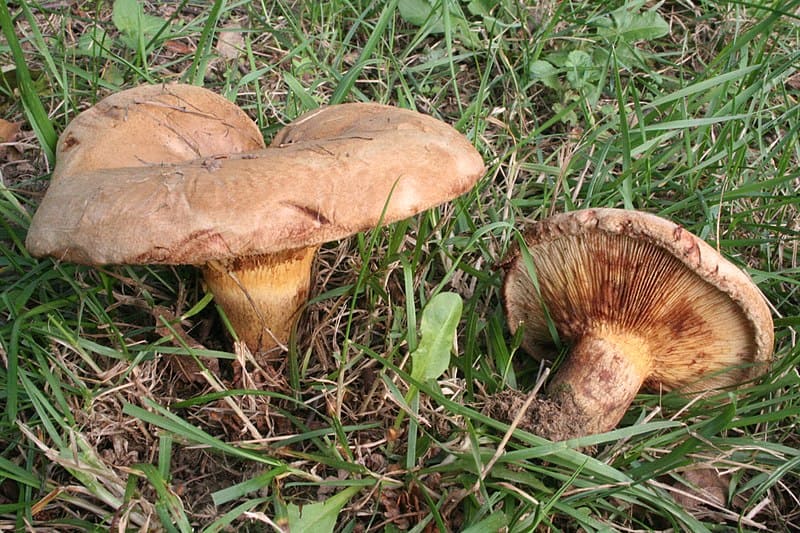
The Paxillus involutus (brown roll-rim) is a toxic mushroom that was once considered edible but is now known to cause severe immune reactions. Repeated consumption can lead to the destruction of red blood cells, causing anemia, kidney failure, and even death.
This list is by no means exhaustive. We’ve merely touched the tip of the iceberg of poisonous mushrooms. There are many other toxic mushroom species worldwide. Always exercise caution when foraging for wild mushrooms and consult with experts if you are unsure of a mushroom’s identity. Also, be aware that mushrooms can look quite different in the real world, compared to the ones you see in photos.
Identifying poisonous mushrooms
There are a number of online mushroom guides available that are very handy if you decide to go on that adventure. If you’re considering foraging for mushrooms, you should absolutely consult a book before going out. It’s the absolute minimum you can do. But even this is rarely sufficient.
Accurately identifying mushrooms can be challenging, even for experienced foragers. Still, here are some useful tips you can follow.
General tips
It is necessary to always examine mushrooms with caution before collecting them. Vital information such as shape, gill structure, color, texture, size, and growing conditions must be noted. In examining the specimen, extra care must be taken and gloves should be worn to avoid irritation.
In most cases, mushrooms that have white gills (rings in the stem) are not often safe for consumption. Moreover, those that have volva can also be toxic. It can be tricky because the volva is often underground hence, it is necessary to dig around the base of a mushroom to look for it. Lastly, the ones with red color on the cap or stem are also either poisonous or induce hallucinations that can be fatal.
Mushrooms are great food given their distinct taste and nutritional value. However, you must be knowledgeable before you dig in. You might miss out on a delicious treat, but more important is that you are alive.
Know the toxic lookalikes
Some poisonous mushrooms closely resemble their edible counterparts. Yet again, please don’t take any risks whatsoever. For example, the deadly Amanita virosa, or “destroying angel,” looks similar to the edible Agaricus bisporus (white button mushroom). To avoid confusion, learn to distinguish between toxic lookalikes and their harmless counterparts.
Study their key differences, such as the presence or absence of a ring around the stem, the color of the spores, and the type of habitat in which they grow. When in doubt, always consult an expert — books can be useful, but may not be enough.
Look up what grows in your area
It’s also good to look up what types of mushrooms grow in your area. There could be a great variety, but it could help you narrow down the list of suspects. If a mushroom looks just like another, but that other doesn’t even grow on your continent, you can pretty much eliminate it as a possibility.
Examine the entire mushroom
When identifying a mushroom, it’s crucial to examine the whole specimen, including the base of the stem. Some key features may be hidden underground, so gently dig around the mushroom to reveal its full structure. Take note of the cap shape, gill attachment, stem texture, and any other distinctive features.
Use multiple sources for identification
Relying on a single guidebook or online resource may not be sufficient to accurately identify a mushroom. Consult multiple sources to cross-reference the information and verify your findings. If possible, seek advice from experienced foragers or mycologists (fungi experts) before consuming any wild mushrooms.
Take photos and document your findings
Photograph the mushrooms you encounter from multiple angles, capturing every detail. This documentation can be a valuable reference for identification purposes and may come in handy if you need to consult with experts.
It’s also a useful experience for yourself and can help you chronicle and enjoy your journey. Foraging isn’t really a necessity nowadays, so it’s something you should also enjoy.
Never take any chances with mushrooms
When it comes to wild mushrooms, it’s always better to be safe than sorry. Follow these safety tips to minimize the risk of accidental poisoning:
If in doubt, throw it out
If you’re unsure about a mushroom’s identity, it’s best to leave it alone. Consuming even a small amount of a toxic mushroom can have severe consequences. Don’t risk your health or the health of others by making an uninformed decision.
Cook all wild mushrooms
Even some edible mushrooms can cause gastrointestinal upset when eaten raw. Cooking wild mushrooms can help break down any potential irritants and improve their digestibility. However, keep in mind that cooking does not neutralize the toxins in poisonous mushrooms.
Teach children mushroom safety
Educate your children about the potential dangers of wild mushrooms and instruct them never to touch or consume any mushroom without adult supervision. Encourage them to ask questions and learn about the various types of mushrooms they may encounter in nature.
Keep Your Pets Safe
Pets, especially dogs, are curious creatures and may be tempted to consume wild mushrooms. They may also be more vulnerable to toxic plants or poisonous mushrooms than you or me — so you should keep a close eye on them.
Supervise your pets when outdoors and remove any mushrooms from your yard to minimize the risk of accidental poisoning.
Seek Medical Help Immediately if Poisoned
If you or someone you know has consumed a potentially poisonous mushroom, seek medical attention immediately. If you’re unsure, seek medical assistance. Don’t take any risks!
Time is of the essence when dealing with mushroom poisoning, and prompt treatment can make all the difference. Bring a sample of the mushroom or a photograph to help medical professionals identify the species and provide appropriate treatment.
In conclusion, the world of mushrooms is both fascinating and perilous. By understanding the dangers posed by poisonous mushrooms and learning how to identify them, you can safely appreciate and enjoy these remarkable organisms.
When foraging for wild mushrooms, always remember to exercise caution, be vigilant in identification, and never take any chances with your safety.








